Insurance Companies Made Millions on Hurricane Sandy
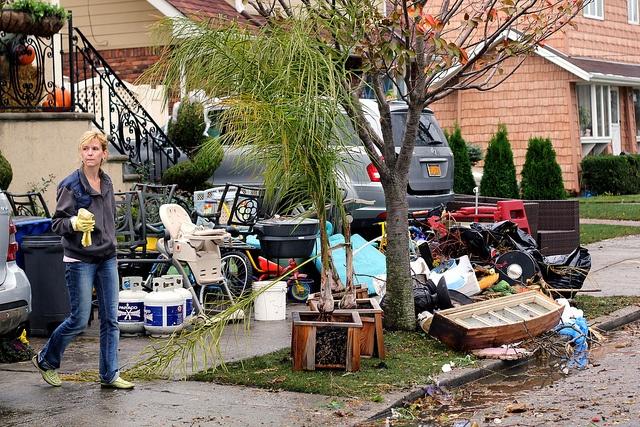

If you still wonder why many blue-collar and middle-class voters are gravitating toward Donald Trump and Bernie Sanders this election season, the aftermath of Hurricane Sandy is a microcosm of why many Americans are disgusted with huge corporations — and a government that appears to cave too easily to big business interests.
As a year-long NPR and PBS Frontline investigation revealed last week, many citizens who lost their homes during Hurricane Sandy insist that they were shortchanged when it comes to rebuilding their homes and lives. Meanwhile, insurance companies made an alleged profit of approximately $325 million annually from 2011 to 2014 from claims filed after Sandy, thanks to a federal government-run program that promised to compensate policy holders up to $350,000 depending on their policies.
But over three years after that massive storm’s wrath, many homeowners in New York and New Jersey are frustrated with local bureaucrats, agencies in Trenton and Albany, and of course, the federal government. The general consensus is that insurers are unprepared to cope with risks related to climate change, but in this case, they were clearly profiting from these risks.
Part of the problem is local bureaucracy, with the left hand not knowing what the right hand is doing. In New York City, for example, a city-federal program designed to launch reconstruction in neighborhoods affected by Sandy received 20,000 applications. But by summer 2014, only 960 of approximately 20,000 applicants received any benefits.
But what has fomented a lot of anger in New Jersey and New York is how the federal government and insurers managed the National Flood Insurance Program (NFIP), which was established in 1968. Congress passed legislation with the idea that the federal government would provide flood insurance in low-lying areas if those communities created floodplain management plans to minimize flood losses. In return for communities taking action to reduce the risk of property damage from floods, this supplemental program would protect both consumers and insurers in the event such a disaster occurred. Like many government programs, this plan was conceptualized to be self supporting with premiums, not with taxpayer dollars.
The U.S. Government Accountability Office (GAO), however, has long complained that the Federal Emergency Management Agency (FEMA), which administers the NFIP, owed the U.S. Treasury approximately $20 billion around the time Hurricane Sandy hit the East Coast. Years of disasters, from river flooding and hurricanes such as Katrina, contributed to NFIP’s woes. But management and operational challenges (which most people would describe as “incompetence”), are partially why NFIP has made the GAO’s “High Risk” list since 2006.
So while FEMA’s website boasts about “Voices 10 Years Later,” which describes the agency’s success stories a decade after the 1993 Great Midwest Flood, the agency is silent about the angry voices along the Jersey Shore and in New York communities such as Staten Island. FEMA’s communications office, however, boasted about how most of New Jersey’s boardwalks were rebuilt, what the private sector has done to lead post-Sandy recovery, and how FEMA provided almost $7 billion in funds to New Jersey.
But as the NPR/Frontline investigation reveals, many locals, and observers, want to know where the money went. Some examples are bizarre, such as the head-scratching case of $600,000 spent on a home appraised at $80,000. The funds were reportedly used to rehabilitate that house and then elevate it 15 feet to protect it from future flooding.
Many other citizens, however, are fuming as they believe they have only received a fraction of the claims they submitted. The problem is that while FEMA administers this federal flood protection program, it pays private insurance companies to write out the policies. Those flood insurance premiums are held in a “basket” that remains separate from other insurance premiums, and FEMA pays out those funds with the insurance companies acting as the third-party administrator. In the event the NFIP runs dry, which has happened in the past, taxpayers kick in the difference.
The problem is that insurers have made money on the program, while assuming none of the risk. But insurance companies are understandably worried about a program that as of 2014 is $23 billion in the red. A recalcitrant Congress could finally say it has had enough and refuse to bail out FEMA and the NFIP.
What journalists at NPR and Frontline found was a pattern of inspection reports that rejected claims of damages from floods due to Hurricane Sandy. Instead, a typical report concluded that flooding did not cause damage or destruction to a home, but instead, a phenomenon such as “long-term differential earth movement” was responsible for most of the damages. A homeowner could appeal, but FEMA often sided with the insurer — because instead of sending an appeal through a third party, FEMA often sent the records to the insurance company directly and asked the insurance company to review them. Of course, out of self-interest, the insurance company would reply to FEMA with a “no” recommendation, and this investigation revealed that FEMA sided with insurers 75 percent of the time.
If FEMA looked pitiful after Hurricane Katrina, its performance has hardly improved a decade later, according to critics. In March, a government audit slammed FEMA’s oversight of NFIP, saying the agency has inadequate internal controls, and that these funds are at further risk of abuse, fraud and waste. Earlier this month, FEMA finally responded to this cascading criticism and announced it would reform the program.
Part of the problem with disaster such as Sandy is that government tends to waste money by being reactive, not proactive. FEMA and other government agencies often tout the statistic that for every $1 spend on mitigation, $4 is saved on future benefits such as insurance payouts. But as Frontline pointed out, of the $300 billion in applications received for such climate mitigation projects, the agency was only able to fund less than half that amount.
Some may say the foundation of this problem is the “moral hazard” of building too densely along our coasts. But the bottom line is that those hit the hardest were often the most vulnerable — they were not the owners of Victorians in Cape May or mansions in the Hamptons. These citizens often had no choice but to buy these supplemental insurance policies in order to protect their homes, and government and the insurers colluded to deny them the chance to rebuild. Hence, sagas like this are why many U.S. citizens are convinced that no matter how hard they work, the deck is stacked very highly against them.
Image credit: Pamela Andrade/Flickr
Gawker Lawsuit Exposes Champerty of Tech Champ Peter Thiel
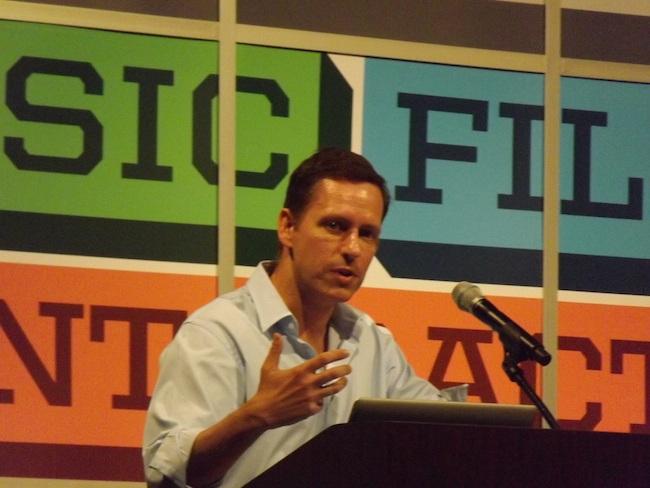

Everyone is talking about the $140 million chunk of change awarded to Hulk Hogan in March, in settlement of the multi-talented entertainer's notorious "sex tapes" case against Gawker Media. The judgement is sure to be appealed, but in the meantime it threatens to bankrupt a high-profile online media outlet known for the popular tech sites Gizmodo and Lifehacker, along with stories on sex, gossip and, more recently, politics.
The tech connection is more than a little ironic considering a big twist on the Gawker case: Word leaked last week that tech giant, libertarian and active Trump-for-president supporter Peter Thiel (Lyft, PayPal, Founder's Fund, etc.) secretly bankrolled Hogan's case against Gawker. So, if bringing down Gawker is the aim, what does a tech entrepreneur like Thiel have to gain?
No, but Peter Thiel hearts journalists ... right?
Piling on to the irony is Thiel's role as a "primary supporter" of an important global organization, the Committee to Protect Journalists. Support of this organization was still included in Thiel's bio on the Founder's Fund website as of this writing.
CPJ began in 1981 in response to the very real physical and civil-rights threats faced by journalists worldwide. Those threats continue to this day, and in the meantime CPJ has broadened its mission to include (emphasis is CBJ's):
"...not only journalists but anyone who cherishes the value of information for a free society."
Thiel's bio implies that his support for CPJ is active and current:
"Peter is also involved with a variety of philanthropic, academic, and cultural pursuits. He serves as a primary supporter of the Committee to Protect Journalists ... "
However, a quick search of CPJ's website does not turn up any active role.
In fact, last week CPJ responded to the revelation about Thiel's role in the Hogan lawsuit by issuing a statement suggesting that Thiel ended his active support several years ago:
"Between July 2008 and January 2013, Peter Thiel and Thiel Foundation provided significant financial support to CPJ. As a free expression organization, we have a wide variety of supporters with a wide variety of views.
"Regarding reports that Peter Thiel underwrote civil litigation by Hulk Hogan against Gawker, we note that we support the right of individuals in the United States and around the world to seek civil redress in cases of defamation. However, we do not support efforts to abuse the process by seeking to punish or bankrupt particular media outlets. "
Ouch! Smackdown!
What is the Gawker sex tape lawsuit?
So ... 2013 ... if that year starts to ring some bells, either it's pure coincidence or you may be on to something.
The timeline suggests that Thiel's active support for free expression ended around the time when Hogan (born Terry Bollea) launched his lawsuit against Gawker in Florida state court.
The case has roots in in 2012, when Gawker published a brief but explicitly sexual excerpt from a 30-minute tape featuring Hogan, which the outlet received anonymously.
Gawker argued that the extended editorial commentary accompanying the excerpt provided it with First Amendment protection. In December 2012, the federal 11th Circuit Court of Appeals agreed that the materials were newsworthy and ruled in the company's favor.
However, all was not lost for Hogan -- or Thiel. Hogan already had a case moving along at the state level, in Florida, against two intimate acquaintances who were involved in the sex tape. After he lost his federal case, Hogan added Gawker to the state case. That's when things began to look grim for Gawker.
In April 2013, the judge in the state case issued a temporary restraining order against Gawker on behalf of Hogan. Under the terms of the order, Gawker had to remove the material from its network and deliver all known copies, transcripts and other versions to Hogan's attorneys. Gawker initially balked but later complied, though it refused to take down the commentary, by A.J. Daulerio.
Gawker won an important victory in 2015, when it successfully sued the FBI to obtain material related to the agency's investigation of the Hogan sex tape, which the company argued was crucial to its defense.
But all that was for naught. The case finally went to trial in March of this year, with a healthy dollop of detail about the intimate relations between Hogan and the two other people involved in the tape.
A six-person jury deliberated for six hours and came back with an award of $115 million against Gawker for emotional and economic damage to Hogan, a cool $15 million more than he asked for. They must have been pissed! Another $25 million in punitive damages was later tacked on.
Yes, it's personal
This all seems like it has nothing whatsoever to do with Thiel, except if you believe that revenge is a dish best served cold.
Thiel and Gawker have been duking it out in public since 2007. Gawker is more than happy to share the details of that battle, which flared up after the publication revealed personal details about the billionaire, which it gleefully continued on a regular basis.
Aside from trading barbs and insults, Gawker has regularly reported on some of the less-than-savory aspects of Thiel's business and political ventures.
The Gawker reports predating the 2013 lawsuit include a 2009 story about Thiel's financial backing for anti-climate policies, and a 2008 story focusing on Thiel's $1 million donation to the notorious anti-immigrant group NumbersUSA.
In that context, it looks like Thiel was waiting for a chance to take Gawker down. Hogan simply offered a match to light the fire.
What is this champerty of which you speak?
Thiel's hefty contribution to the Hogan legal defense fund was a well-kept secret until last week, when Forbes blew it wide open.
According to some media stakeholders, that relationship thrust the Hogan case into the ethical gray area of a type of third-party litigation funding called champerty.
Third-party funding is quite common as a means of enabling shallow-pocketed litigants to keep their lawsuits alive. Champerty -- a legal concept dating back to medieval times -- only enters the picture when the third party profits from the settlement.
Sketchy or not, champerty has become a common form of speculative investment in the U.S. It is illegal in some states but not in Florida (I know, right?).
Within days, numerous media stakeholders issued statements roundly condemning Thiel. Among them was Caterina Fake, co-founder of photo-sharing platform Flickr. In a condensed version of her article posted on Quartz, Fake makes a good case that Thiel takes champerty into a very dark place, in which the "profit" is not cash but revenge.
Do read Fake's article for a full picture of the issues involved, but for those of you on the go, here is the nut of her response:
"... the Thiel funding, coming as it does from a billionaire, is not an investment. Rather, it is represents the settling of a personal vendetta against a media company by someone with the money to drive a company to ruin through litigation. (Some lawyers have speculated that Thiel’s lawsuit sponsorship is technically called “maintenance” if he doesn’t receive a share of the proceeds.)""... What is significant about this case is that by funding Hogan behind the scenes, Thiel could get his revenge, escape exposure, and influence the outcome of the case...
Fake is far from the only media stakeholder to come out in support of Gawker and its founder Nick Denton. According to a detailed report in Forbes (do read that one, too), Ebay's Plerre Omidyar announced that his First Look Media would participate in Gawker's defense:
"In keeping with our mission to protect the First Amendment, First Look Media is now organizing an amicus effort around these concerns, and we will be paying close attention as this case moves into its appeals phase. To be clear, this is about press freedom principles upon which our company was founded, and about which we care deeply."
Thiel exposed, Gawker gets last laugh?
Now that the cat is out of the bag, Denton appears more than ready take on Thiel in the court of public opinion.
According to a report in Bloomberg last Friday, Denton issued a public challenge to Thiel:
"Denton’s response to Thiel’s decloaking: issue a challenge to Thiel on Thursday to a 'conversation' about the issues raised by their battle: Free speech versus personal privacy. Public interest versus individual reputations. Denton's barrels of ink versus Thiel's barrels of money."
As cited by Bloomberg's Paul Boutin, Denton also got in a subtle dig at Thiel's relationship with CPJ:
“We can hold the discussion in person with a moderator of your choosing,” Denton offered Thiel, “in front of an audience, under the auspices of the Committee to Protect Journalists. ..."
In yet another ironic twist, the public challenge sets up a battle of the behemoths worthy of the pro wrestling circuit, only instead of colorfully-clad contenders bouncing off ropes and throwing chairs, we get two tech titans in button-down shirts.
In terms of net worth, the matchup is far from equal, but public opinion already appears to have made up its mind. Expect Denton to keep pushing -- and pushing -- until Thiel comes up with some kind of response.
Revenge certainly is a dish best served cold.
Photo: Peter Thiel by Luc van Braekel, flickr.
Tourism + Climate Change = Famous Thai Islands Closed


Several of Thailand's best known islands, including the spot made famous in the film “The Beach,” are closed indefinitely due to concerns of both damage from tourists and coral bleaching connected to climate change.
Part of this is a sustainability issue. Tourism is growing rapidly around the world, meaning that more and more people are visiting popular destinations such as Thailand -- which was the 10th most visited country in the world in 2014, according to the World Tourism Organization, with more than 26 million tourists visiting the Southeast Asian nation. That is a staggering increase of 24 percent from 2013.
Unfortunately, tourists can have a negative impact on the environment, something that is plainly becoming a problem in Thailand. More visitors coming to the same beaches equals more trash and more erosion. The recent spate of people taking selfies with animals resulting in their deaths is a testament to the adverse impacts of tourism. In Thailand, the biggest problem was massive crowds.
Thon Thamrongnawasawat, deputy dean of the Faculty of Fisheries of Kasetsart University, told the Bangkok Post that there were sometimes well over 1,000 tourists on a beach on Koh Tachai that could hold up to 70 people, as well as tour boats and food stalls.“This caused the island to quickly deteriorate. If it's not closed now, we'll lose Koh Tachai permanently," he said.
In some places near the popular island destination Phuket, 80 percent of coral reefs are damaged due to too many people diving and not keeping a safe distance from these precious marine lifeforms. In other places, overcrowding of speedboats increased pollution and damaged fragile coastlines.
This is not inevitable, of course – ethical tourism can allow visitors to appreciate and enjoy a place, while preserving it for others to also enjoy. This is what helped countries like Costa Rica and Botswana preserve their natural environments in a way that allows people to enjoy the true beauty of nature.
There is another issue, of course: climate change, which is impacting every part of the world. If it is not tackled, it will result in the destruction of not only Thailand's pristine coastal environment, but also countless pieces of natural heritage around the world, no matter how few tourists come to visit. Coral bleaching, for example, is accentuating the impacts of tourism on Thailand's coral reefs.
What is happening in Thailand could be a sign of what's to come. It is a warning to us. We need to increase the viability of ethical, environmentally-friendly tourism -- both through good behavior and initiatives to ensure that impacts are mitigated on the ground. And we also must move forward on the Paris Agreement goals, ensure that warming stays below 1.5 degrees Celsius, and put more research and funding into how we can prevent climate impacts, such as coral bleaching.
Otherwise, tourism may drop -- not because people don't want to travel, but because there just aren't any beautiful places left to visit.
Photo Credit: Neitram via Wikimedia Commons
Splacer Taps Into the Power of the Sharing Economy


We live in the exciting new age of the sharing economy. The fact that companies like Uber and Airbnb reign supreme, despite not owning any cars or real estate, is proof that something very interesting is happening.
Since the Industrial Revolution, the world has developed complex supply chains. From designers to manufacturers, distributors to importers, wholesalers and retailers, it’s what allows billions of products to be made, shipped, bought and enjoyed in all corners of the world.
In recent times, however, the power of the World Wide Web has unleashed a movement that’s rapidly destroying these layers and shifting power to new and unexpected places. The Internet has quickly become the most powerful mechanism we can imagine to match individuals that need something and people with something to offer.
In many ways, what Airbnb does for longer-term home stays, Splacer does for short-term event spaces. The company’s mission is to reimagine the use of space by creating sustainable and inclusive ways of living together. It's essentially a marketplace where people can list, discover and book unique spaces for different types of events.
Splacer's pitch to owners is simple: Add a revenue stream by utilizing space that normally sits vacant. If we're willing to offer strangers our most personal things – our beds – then why not our living rooms, roof decks, kitchen tables, or commercial spaces so individuals (and brands) can use them for events, offsite meetings or photoshoots?
The best part is that each space is impeccably designed and pre-vetted by the platform's team of designers and architects.The service even sends out a professional photographer to take photos of the site, and only asks for a 15 percent commission whenever its rented.
While other sharing economy startups like Breather work primarily with commercial spaces, Splacer’s strategy is to draw from a wider range of owners and buildings while curating what’s included on the site. This enables the company to offer a unique range of spaces for its target market: entrepreneurs.
"Breather and WeWork are real estate platforms," CMO Lihi Gerstner told TriplePundit. "They rent out the spaces they own on demand (Breather) or on a monthly basis (WeWork). Splacer is an open peer-to-peer marketplace, where people list their own spaces - commercial or private – for other people to rent."
Splacer does not own or create any spaces. The company prides itself on offering access to undiscovered and underutilized spaces which might otherwise go to waste.
Gerstner founded the company back in 2014 with Adi Biran, a fellow architect and Columbia University grad from Israel. They've since added Chief Technology Officer Lior Ash as another co-founder and Maria Molland as co-founder and COO.
Splacer grew out of Biran and Gerstner's work and research, which examined the under-utilization of space in dense urban areas, as well as the Israeli concept of a kibbutz, a type of communal settlement. They were inspired by how one space can be used in many ways and found it to be better for resource and energy consumption.
"As architects, we value space and of course promote new construction," Gerstner told 3p. "However, we realize that space is becoming more expensive and less accessible. People cannot afford living in big and expensive cities, and the possibility to share the resource of space can help create more sustainable and affordable cities."
Gerstner and Biran began designing with this in mind and found Splacer to be a natural next step. “We believe we can improve the way we use and share space in order to foster creativity, build community and promote a more sustainable model of urban life,” reads the company’s website.
This model has proven to be quite profitable. Now boasting over 500 spaces in New York and San Francisco, two of the most expensive cities in the world, Splacer is primed to exploit this niche in the rental market. The company was the beneficiary of a $1.65 million round of seed funding last year and won the Qualcomm Qprize for an additional $250,000. There are also plans to enter into another round of funding in the coming months.
Splacer was founded on the basic principal that great design can be a shared commodity. Rooted in a philosophy of local sharing, the company is a shining example of how the thoughtful use of resources can be extended to as many communities as possible. As for the future of Splacer, Gerstner said: "As always, we will continue developing the product and the tools for our customers on both the supply and the demand sides. And, we are working on an expansion plan to make sure Splacer will soon be available in many more cities."
Images courtesy of Splacer, used with permission
Internet Company Aims to Boost 'Made In America' Goods
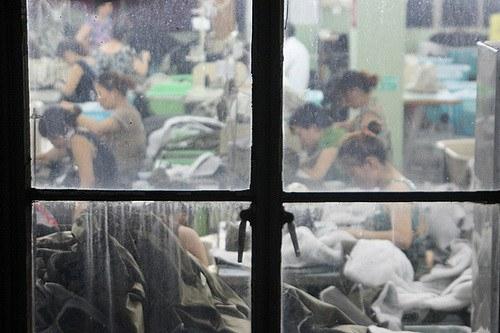

Maker’s Row, a startup company aiming to produce more goods domestically, may make Americans who are passionate about keeping factory jobs in the states -- and enjoy clothing tabbed with a “Made in the USA” label -- rest a little easier.
Matthew Burnett, the company’s CEO and co-founder, began by making designer watches, but his experience dealing with manufacturers overseas proved to be frustrating and not worthwhile for the Brooklyn-based businessman.
“There were language barriers,” Burnett told NPR. “There was the time-zone differences; so I would be waiting up at 1, 2 o’clock in the morning to respond to emails.”
Along with the logistical challenges, the manufacturers producing Burnett’s wristwatches required a 1,000-piece order minimum and often took three or four months to send back mere samples of the product.
Fed up with sending his work abroad, Burnett tried to develop a clothing line produced in the United States. He wanted to keep everything simple and small, but the efforts proved equally frustrating and limiting. There was no specific blueprint to find U.S. factories ready to produce specific goods. So Burnett and his team developed a website, Maker’s Row, to match factories with business proposals to smoothen the searching process and turn business ideas into domestic realities.
American designers post listings, similar to Craigslist, to pitch their product to a company specializing in the production of that prospective item. Manufacturers will then spot the listing and contact the designer if they want to pursue a business partnership.
The website has so far been helpful to both designers and manufacturers. Struggling designers are given the opportunity to use an Internet-based, easy-to-use platform to get their product on the map while manufacturers are seeing a spike in production based on the constant need from startups.
Aside from the benefit of efficiency in searching for partnerships between designers and manufacturers, Burnett said producing goods in the U.S. can be effective in spotting early trends and providing oversight. He said the turnaround times in production can make the products outdated by the time they are actually put on shelves in the United States.
In order to provide adequate oversight in the production, a company’s CEO would have to make frequent trips or check-ins to the factory overseas. Burnett points out that this is an expensive venture, and one that wouldn’t exist if the factory were located domestically.
While the company may seem all hunky-dory, the production prices are understandably higher in the U.S. than in foreign countries like China or Bangladesh because of working wages and smaller size of production. This translates to higher market prices for consumers. And according to an Associated Press-GfK poll from April, Americans prefer low prices to items “Made in the USA.” Nearly 75 percent say they like the idea of American-made goods but think the items are too costly or hard to find. Just 9 percent of consumers say they buy only American-made items.
Image credit: Flickr/Matt
What Other Cities Can Learn From San Fran's New Solar Law


By Kayla Matthews
Although those who reside outside of San Francisco may not be aware of the fact, mid-April 2016 marked a huge milestone in the advancement of green technology in the city and its mandated usage in all newly-constructed buildings.
The new legislation, unanimously approved by the San Francisco Board of Supervisors on April 19, states that all new buildings with 10 stories or fewer, including all residential and commercial projects, must include a photovoltaic solar panel installation that encompasses 15 percent of the building's total rooftop. Moreover, the area that is dedicated to the installation must be positioned in full sunlight and free of any shade or obstructions.
San Francisco's new law doesn't officially take effect until Jan. 1, so builders and contractors still have time to prepare their businesses for the new regulation. However, any buildings that are under construction within San Francisco city limits will be required to accommodate the recent legislation.
Paving the way for other cities to follow
San Francisco is certainly the first major U.S. city to require the installation of solar panel systems on new buildings, but it's not the first governmental entity to do so. In fact, Sebastopol and Lancaster, both of which are located in California, have abided by similar regulations since 2013.
Regardless of who was first, it's safe to say that such legislation is paving the way for future policies and standards. The push for new regulations regarding solar energy may even lead to new innovations in the efficiency and effectiveness of alternative energy systems in general.
According to a guide on home heating systems, today's solar energy installations can already bolster energy efficiency and reduce overall electricity costs. And the implementation of an active or passive solar energy system can cut down on your heating and cooling bills. If we start to see more states passing laws requiring solar or other alternative forms of energy, who's to say what breakthroughs we could see?
Rising stocks
The recent legislation in the city of San Francisco has also impacted the stock market. Some companies reported gains ranging from 10 to 16 percent immediately following the decision, while smaller companies in the industry saw gains of two or three percent. Given such an immediate effect on the stock market, one can only speculate on the gains we'd see after widespread regulation and standardization of alternative energy systems.
In fact, some of the world's most prolific billionaires have recently come together to promote alternative energy and to facilitate increased research and development regarding new alternative energy solutions. The group, known as the Breakthrough Energy Coalition and headed by Microsoft's Bill Gates and Facebook’s Mark Zuckerberg, has already made significant investments into solar and alternative energy since its inception in late 2015. Moreover, their activities have prompted others to invest their own funds into green or solar stock options.
Other prominent investors in the Breakthrough Energy Coalition include Jeff Bezos, Jack Ma, Laura Baxter-Simons, Nat Simons, Reid Hoffman, Vinod Khosla, Meg Whitman and more. At least 28 wealthy investors have already pledged funds to the initiative, which is expected to increase the awareness of solar energy while simultaneously bolstering accessibility to alternative energy in general.
Embracing solar energy throughout the U.S.
Despite an ever-increasing presence, modern solar energy systems still leave much to be desired in terms of functionality and efficiency. However, with initiatives like San Francisco's new solar energy requirement, as well as the growing focus on solar energy systems throughout the U.S. and around the globe, those who are invested in fossil fuels certainly have a lot to worry about.
Image by Davide Ragusa
EU project turns textile waste into consumer products


By Vikas Vij — The global textile industry is valued at over $1 trillion, ranking as the second largest industry in terms of intensity of trade. Textiles are also the fastest growing sector in household waste. Discounting and low retail prices over the last two decades have led to a dramatic increase in the consumption of clothing, with a resultant rise in textile waste from the consumer. More than three million tons of textiles are thrown away each year in the EU alone.
To address this growing challenge of textile waste, VTT Technical Research Center of Finland and Aalto University are participating in an EU project called Trash-2-Cash. The project brings together designers, researchers, materials suppliers and textile manufacturers from all over Europe to solve the problem by recycling and development of high-performance fibers.
The Trash-2-Cash project team, which includes experts from all levels of the production chain, is looking to develop techniques that can be used to spin, knit, sew or design innovative, highquality products from used textile fibers. Thetechniques for pre-processing and washing waste textiles, separating fibers, and fiberization are designed to be eco-friendly and efficient.
The role of VTT is to focus on breaking down the fibers in waste textiles and making them suitable for the cellulose carbamate process. The Ioncell cellulose fiber manufacturing process will be carried out at the Aalto University. The Ioncell-F process has proved to be particularly suitable for the recycling of cellulose waste.
Designers play an important role in the project to ensure the quality, performance and appearance of the new products appeal to consumers. The aim is to find new markets and uses for recycled textile fibers. Demo products will be manufactured together with commercial partners throughout the project.
The Trash-2-Cash project is part of the EU’s Horizon 2020 program, and will run from 2015 until 2018. The total budget is EUR 8.9 million, of which EU funding accounts for EUR 7.9 million. The project team includes 18 organizations from 10 EU countries. The project is coordinated by SP Technical Research Institute of Sweden. In addition to VTT and Aalto University, Finnish participants include the children’s clothing manufacturer Reima.
Source: Trash2Cash
UK workforce leads Europe, US in sick days


The UK workforce has more sick days than any other European country, and twice as many as the US, notes Gerry Brennan, CEO of Cloudbooking, a space management software company that works with leading UK companies.
The exact figures, as calculated by consultancy PricewaterhouseCoopers, are that the average British worker takes off 9.1 sick days annually, with the rest of Western Europe at 7.3 days, while in the US the figure is 4.9 days. The single most widespread cause of long-term absence from the workplace: mental health issues.
“It’s a real economic concern, illustrated by health body BUPA, which reports that over £29 billion pounds is lost annually to the UK economy, with mental health cited again as the major issue,” says Brennan.
“The reports we have read in recent years on mental health fail to take into consideration the workplace’s bearing on many people’s mental status. After all, when you are in a job that you don’t enjoy and feel unsupported and unhappy, the response is to stay away as much as possible”.
Brennan adds that in 2014, the University of Warwick produced a report that showed happy employees work harder, and are at least 12 per cent more productive. “Treat employees well, support them and they will naturally perform better, with less time off sick,” he explains.
Brennan concludes that more has to be done to allow employees more control over how to manage their work and lives. “Allowing a work/life balance for workers means a workforce that is motivated, supportive and genuinely behind what their organisation is trying to achieve.
“Britain’s level of sick absences is inexcusable - it’s time to create a supportive working environment for employees, which in turn will create a ‘win win’ for the UK economy”.
3p Weekend: Tiny Houses Made from Recycled Materials
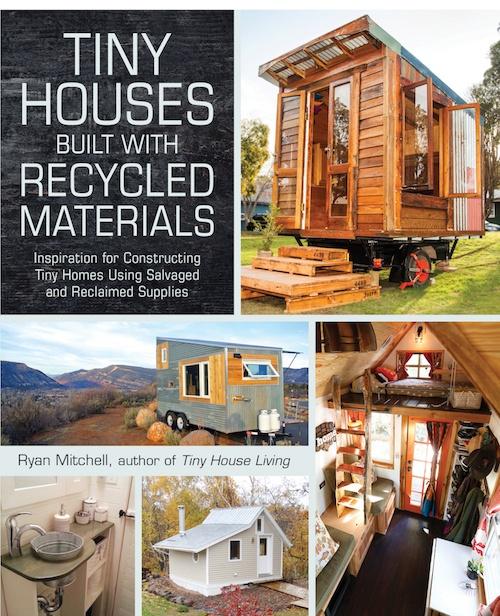

With a busy week behind you and the weekend within reach, there’s no shame in taking things a bit easy on Friday afternoon. With this in mind, every Friday TriplePundit will give you a fun, easy read on a topic you care about. So, take a break from those endless email threads and spend five minutes catching up on the latest trends in sustainability and business.
Well, it seems the tiny house movement is here to stay. Following the trend of oversized 'McMansions' in the 1990s, a growing number of homemakers are shunning unneeded living space in exchange for pint-sized dwellings that house only the essentials.
To celebrate the movement -- and help others who want to get involved --- tiny house enthusiast Ryan Mitchell penned his most recent book, "Tiny Houses Built with Recycled Materials: Inspiration for Constructing Tiny Homes Using Salvaged and Reclaimed Supplies."
A native of Charlotte, North Carolina, Mitchell has followed the tiny house movement for years. He founded The Tiny Life blog in 2009, organizes the annual Tiny House Conference and calls a 150-square-foot structure home. In other words: If you're into tiny houses, Mitchell is your guy.
In his new book, Mitchell takes things a step further by featuring tiny homes constructed from recovered and repurposed building materials. Some are rugged (wait, what do you mean no toilet?), while others are downright sleek. The book includes innovative tiny homes from around the world, and Mitchell was kind enough to share three examples for your weekend reading pleasure. Be warned: You may be suddenly overcome by how excessively large your Manhattan apartment is.
James Galletly: Tiny house on wheels
Location: Crescent Head, New South Wales, Australia
Size: 52 square feet
Completed in 2014
Utilities: Electricity: Solar Heating/Cooling: None Water: None Water Heating: None Stove: None Refrigeration: None Toilet: None Internet: None
James Galletly was visiting a friend in California when he first picked up a book by tiny house publishing legend Lloyd Kahn. “The biggest part of the appeal is the DIY mentality,” Galletly told Mitchell for the book. “People are building their own homes and coming up with designs that are far more original and creative and have more personality than what is normally considered a home.” He took the tiny house idea with him back to his native Australia.
The design of the tiny caravan depended on the materials at hand. “I enjoyed the creative process. I enjoy the interaction between letting the materials dictate the outcome and working with what you’re given,” he said. Galletly went to a local rebuilding center, visited salvage yards and went dumpster diving. He spent a month collecting materials before he started building and kept looking for things throughout the rest of the build. He even set up a chalk board next to the build site, featuring materials he needed, so his neighbors could drop things off -- and they actually did.
The few materials bought new included the house wrap, the electrical wiring, and the nails and screws. Galletly estimates that 95 percent of the tiny house is built with reclaimed materials. He advises builders looking to use secondhand materials to keep an open mind and creatively use the things you find along the way. “It’s the most enjoyable part about secondhand materials. It’s so much easier to work with the textures and the palette you’re given.”
Conrad Rogue: Tiny house on foundation
Location: Jacksonville, Oregon Size: 70 square feet Completed in 2013
Utilities: Electricity: 50-watt solar panel and small battery Heating/Cooling: Olive oil candles and tiny can stove Water: 3-gallon carboy (rain water) Water Heating: None Stove: Single-burner can stove Refrigeration: Cool box on the north side of the cob wall Toilet: None Internet: None
Conrad Rogue is not new to building spaces for himself. Early on in life, he bought some land and built a small cabin, and from that he began a lifelong journey of building eco-friendly homes. Today he focuses on cob homes: earthen structures that are built from a mix of clay, sand and straw.
He now lives in an itsy-bitsy cob house in Jacksonville, Oregon. Rogue told Mitchell with a chuckle that cob is “the original reclaimed material” and the one he most likes to work with. After building and living in many types of structures including a cabin, a teepee, a yurt and a dome house, cob seemed to be just right for Rogue. “Energetically it gives a very nice feel,” he told Mitchell for the book.
Rogue’s house is comprised of an upper and lower floor. In the loft is a large sleeping space where he has his bed and storage for clothing. Downstairs, he segmented the space into a sitting area, a small desk and a tiny kitchenette.
The oval house -- the shape gave it its name: the Jelly Bean -- is only 70 square feet. It is part of a small cluster of homes that include a common house where he eats most of his meals and spends time with his fellow residents. But he told Mitchell he spends a lot of his time outdoors.
Cherie Southwick: Tiny house on wheels
Location: Western North Carolina Size: 169 square feet Completed in 2014
Utilities: Electricity: Solar—four 100-watt panels, 12-volt wiring with inverter for standard appliances Heating/Cooling: Suburban RV propane furnace (30,000 BTU) Water: Rain water catchment for watering garden, gravity-fed kitchen sin k (no plumbing) Water Heating: Eccotemp shower instant hot water heater Stove: Cook Mate 3100 2-burner stove (uses denatured alcohol) Refrigeration: 12V EdgeStar refrigerator (or freezer) Toilet: Composting toilet Internet: Wi-Fi extender
In her last year of college, Cherie Southwick was looking ahead to what was next for her. Knowing that she was going to have a lot of student loans and worried about finding a job, she wanted to build a tiny house so she wouldn’t have to pay rent anymore. Since it was on wheels, she could take it with her if her career took her somewhere else.
Southwick's building experience was limited to shop class in high school, but she always had an interest in alternative buildings. She built her home over the course of 10 months, almost entirely on her own. Now after the build, she reflected back, telling Mitchell: “Anyone who is competent enough to use their hands, do a lot of research, and willing to ask for help, they’ll be able to get it done.”
All of the lumber in her home was either reclaimed or from a sustainable lumber operation. Most of the windows, doors and flooring were also recovered, and all of the curtains, cushions and fabric elements are deconstructed dresses that Southwick purchased from Goodwill and then sewed into the final product. She even constructed her kitchen backsplash from broken pottery and ceramic pieces.
All in, the house cost her $11,000 to build, including her solar panel system. Now she has a home to call her own. While she plans to stay in or near Asheville, North Carolina, for the time being, she has options now that she has escaped the cycle of paying rent. From the outside many find the house a curiosity, but to Southwick, “It has just become normal. It has become home,” she told Mitchell.
*Editor's Note: This post contains excerpted text from "Tiny Houses Built with Recycled Materials: Inspiration for Constructing Tiny Homes Using Salvaged and Reclaimed Supplies."
Image credits: 1) "Tiny Houses Built with Recycled Materials: Inspiration for Constructing Tiny Homes Using Salvaged and Reclaimed Supplies"; 2) and 3) Alicia Fox Photography; 4), 5) and 6) Conrad Rogue; 7) and 8) Laila Alamiri
ExxonMobil, Chevron Reject Climate Resolutions at AGMs
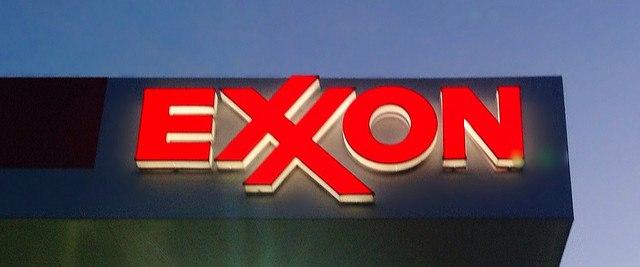

ExxonMobil and Chevron held their annual general meetings on Wednesday, and at those meetings both companies voted on a number of climate-related shareholder resolutions. All of the resolutions failed, but some came closer to success than others.
Two resolutions asked the oil and gas giants to “stress-test” their business strategies against a world in which global temperature rise is limited to 2 degrees Celsius. The resolution, put forth by investor coalition Ceres, received 38.2 percent support from shareholders at Exxon's AGM, and its counterpart garnered 41 percent support at Chevron.
The Chevron resolution asked the company’s board of directors to “adopt long-term, quantitative, company-wide targets for reducing greenhouse gas emissions in products and operations that take into consideration the global commitment to limit warming to 2 degrees.” The Exxon resolution was more specific, asking the company to “publish an annual assessment of long-term portfolio impacts of public climate change policies” -- specifically how a 2-degree scenario would impacts its “oil and gas reserves."
The fact that Exxon and Chevron even voted on such resolutions sends “a powerful message that investors see climate change as a material financial risk, which underscores the ongoing momentum post-Paris and urgency to prepare for a low-carbon transition," Andrew Logan, oil and gas program director for Ceres, said in a statement. Investors managing over $10 trillion in assets “voiced their support for these resolutions," Logan continued, "placing substantial pressure on the boards of these companies to change direction as the world moves toward a low-carbon future.”
“I think it really shows that there is this global movement of people who are calling for climate action,” Lindsay Meiman, U.S. communications coordinator for 350.org, told TriplePundit. “The world is calling out for a transition away from fossil fuels. And it's companies like Exxon whose executives are making so much money that they would rather prioritize their profit over the potential for a livable planet.”“Regarding the vote this year, shareholders sent a very clear message to Exxon and Chevron -- both through the sheer number of climate-related resolutions and the record high votes for many of these -- that they want action on climate change,” Danielle Fugere, president of shareholder advocacy nonprofit As You Sow, told 3p. “Shareholders want to know that companies are reducing emissions and reducing risk, that they are diversifying in the face of climate constraints, and are actively preparing for an increasingly climate-constrained future.”
Exxon’s board of directors recommended that shareholders reject all of the climate change resolutions put forth at the company’s AGM. This is familiar behavior for the company. Earlier this year, Exxon tried to prevent a shareholder resolution introduced by a coalition of investors, including the New York state’s comptroller, Thomas DiNapoli, from coming to a vote. But the U.S. Securities and Exchange Commission intervened and ruled that the company must put the resolution before shareholders.
Meiman of 350.org pointed out that, while Exxon’s board of directors and executives recommend rejecting climate resolutions, “this is a company whose executives have known about climate change, who pioneered that science 50 years ago.” Media investigations revealed that Exxon knew about climate change for decades, but “instead of warning the rest of us, they poured their resources into sowing doubt and confusion and blocking climate action at every level," Meiman said.
A number of state attorneys general, including New York and California, have already launched investigations into what Exxon knew about climate change. 350.org is calling for the Department of Justice to launch a similar investigation. The environmental organization is “doing everything in our power to hold those responsible for the world's biggest crisis,” Meiman told us. She added: “We know who is responsible, and we won't be distracted or intimidated. We're not backing down.”
Image credit: Flickr/Mike Mozart